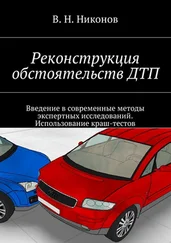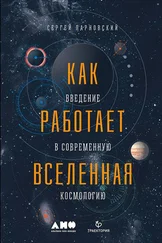Leedale G. F. How many are the kingdoms of organisms? // Taxon , 1974, V. 23, № 2/3, 261–270.
Watanabe Y. et al. Introns in protein-coding genes in Archaea // FEBS Letters, 2002, V. 510, № 1/2, 27–30.
Woese C. R., Kandler O., Wheelis M. L. Towards a natural system of organisms: proposal for the domains Archaea, Bacteria, and Eucarya // Proceedings of the National Academy of Sciences , 1990, V. 87, № 12, 4576–4579.
Stanier R. Y., Van Niel C. B. The concept of a bacterium // Archiv fur Mikrobiologie , 1962, V. 42, № 1, 17–35.
Woese C. R., Fox G. E. Phylogenetic structure of the prokaryotic domain: the primary kingdoms // Proceedings of the National Academy of Sciences , 1977, V. 74, № 11, 5088–5090.
Williams T. A. et al. An archaeal origin of eukaryotes supports only two primary domains of life // Nature , 2013, V. 504, 231–236.
Hug L. A. et al. A new view of the tree of life // Nature Microbiology , 2016, V. 1, 16048.
Gribaldo S. et al. The origin of eukaryotes and their relationship with the Archaea: are we at a phylogenomic impasse? // Nature Reviews. Microbiology , 2010, V. 8, № 10, 743–752.
Embley T. M., Williams T. A. Steps on the road to eukaryotes // Nature , 2015, V. 521, 169–170.
Zaremba-Niedzwiedzka K. et al. Asgard archaea illuminate the origin of eukaryotic cellular complexity // Nature , 2017, V. 541, 353–358.
Единственный эукариот, у которого не удалось обнаружить не только остатков митохондрий, но и никаких митохондриальных белков, — бесцветный жгутиконосец Monocercomonoides , относящийся к супергруппе Excavata. Но из положения этого жгутиконосца на филогенетическом древе однозначно следует, что и у его предков митохондрии когда-то были. Karnkowska A. et al. A eukaryote without a mitochondrial organelle // Current Biology , 2016, V. 26, № 10, 1274–1284.
Fuerst J. A. Intracellular compartmentation in planctomycetes // Annual Review of Microbiology, 2005, V. 59, 299–328.
Fuerst J. A. Beyond prokaryotes and eukaryotes: planctomycetes and cell organization // Nature Education , 2010, V. 3, № 9, 44.
McInerney J. O. et al. Planctomycetes and eukaryotes: a case of analogy not homology // Bioessays, 2011, V. 33, № 11, 810–817.
Yutin N. et al. The origins of phagocytosis and eukaryogenesis // Biology Direct , 2009, V. 4, № 1, 9.
Baum D. A., Baum B. An inside-out origin for the eukaryotic cell // BMC Biology , 2014, V. 12, № 1, 76.
Sogin M. L. Early evolution and the origin of eukaryotes // Current Opinion in Genetics & Development, 1991, V. 1, № 4, 457–463.
Gupta R. S. et al. Cloning of Giardia lamblia heat shock protein HSP70 homologs: implications regarding origin of eukaryotic cells and of endoplasmic reticulum // Proceedings of the National Academy of Sciences , 1994, V. 91, № 8, 2895–2899.
Lake J. A., Rivera M. C. Was the nucleus the first endosymbiont? // Proceedings of the National Academy of Sciences , 1994, V. 91, № 8, 2880–2881.
Moreira D., Lopez-Garcia P. Symbiosis between methanogenic archaea and δ-proteobacteria as the origin of eukaryotes: the syntrophic hypothesis // Journal of Molecular Evolution , 1998, V. 47, № 5, 517–530.
Lopez-Garcia P., Moreira D. Metabolic symbiosis at the origin of eukaryotes // Trends in Biochemical Sciences , 1999, V. 24, № 3, 88–93.
Lake J. A. Eukaryotic origins // Philosophical Transactions of the Royal Society of London, B: Biological Sciences , 2015, V. 370, № 1678, 20140321.
Lopez-Garcia P., Moreira D. Open questions on the origin of eukaryotes // Trends in Ecology & Evolution , 2015, V. 30, № 11, 697–708.
Gupta R. S., Golding G. B. The origin of the eukaryotic cell // Trends in Biochemical Sciences , 1996, V. 21, № 5, 166–171.
Lopez-Garcia, Moreira , 2015.
Там же.
Марков А. В., Куликов A. M. Происхождение эвкариот: выводы из анализа белковых гомологий в трех надцарствах живой природы // Происхождение и эволюция биосферы. — Новосибирск: ИК РАН, 2005.
Takishita K., Inagaki Y. Eukaryotic origin of glyceraldehyde-3-phosphate dehydrogenase genes in Clostridium thermocellum and Clostridium cellulolyticum genomes and putative fates of the exogenous gene in the subsequent genome evolution // Gene , 2009, V. 441, № 1, 22–27.
Nelson-Sathi S. et al. Origins of major archaeal clades correspond to gene acquisitions from bacteria // Nature , 2015, V. 517, 77–80.
Shimada H., Yamagishi A. Stability of heterochiral hybrid membrane made of bacterial sn-G3P lipids and archaeal sn-G1P lipids // Biochemistry , 2011, V. 50, № 19, 4114–4120.
Hartman H., Fedorov A. The origin of the eukaryotic cell: a genomic investigation // Proceedings of the National Academy of Sciences , 2002, V. 99, № 3, 1420–1425.
Taylor F. J. R. Problems in the development of an explicit hypothetical phylogeny of the lower eukaryotes // BioSystems , 1978, V. 10, № 1/2, 67–89.
Schulze F. E. XXXII. — On the relationship of the sponges to the Choanoflagellata // Journal of Natural History , 1885, V. 15, № 89, 365–377.
Cavalier-Smith T. Eukaryote kingdoms: seven or nine? // BioSystems , 1981, V. 14, № 3/4, 461–481
Cavalier-Smith T. The origin of eukaryote and archaebacterial cells // Annals of the New York Academy of Sciences , 1987, V. 503, № 1, 17–54.
Baroin A. et al. Partial phylogeny of the unicellular eukaryotes based on rapid sequencing of a portion of 28S ribosomal RNA // Proceedings of the National Academy of Sciences , 1988, V. 85, № 10, 3474–3478.
Lynn D. H., Sogin M. L. Assessment of phylogenetic relationships among ciliated protists using partial ribosomal RNA sequences derived from reverse transcripts // BioSystems , 1988, V. 21, № 3/4, 249–254.
Читать дальше
Конец ознакомительного отрывка
Купить книгу










